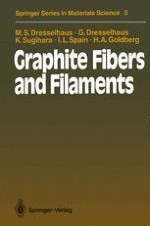This book was begun after three of the present authors gave a series of in vited talks on the subject of the structure and properties of carbon filaments. This was at a conference on the subject of optical obscuration, for which submicrometer diameter filaments with high length-to-diameter ratios have potential applications. The audience response to these talks illustrated the need of just one scientific community for a broader knowledge of the struc ture and properties of these interesting materials. Following the conference it was decided to expand the material presented in the conference proceedings. The aim was to include in a single volume a description of the physical properties of carbon fibers and filaments. The research papers on this topic are spread widely in the literature and are found in a broad assortment of physics, chemistry, materials science and engineering and polymer science journals and conference proceedings (some of which are obscure). Accordingly, our goal was to produce a book on the subject which would enable students and other researchers working in the field to gain an overview of the subject up to about 1987.
